Birds are one of the most fascinating and diverse groups of scavengers in the animal kingdom. From raptors to vultures, these birds play a crucial role in cleaning up the environment by consuming dead animals and other organic matter.
The scavenging behavior in birds is a specialized adaptation that has evolved over millions of years, allowing them to survive and thrive in many different habitats around the world, from deserts to forests to wetlands.
In this article, we will explore the fascinating world of birds as scavengers, examining their unique adaptations, behavior, and ecological roles.
1. Golden Eagle
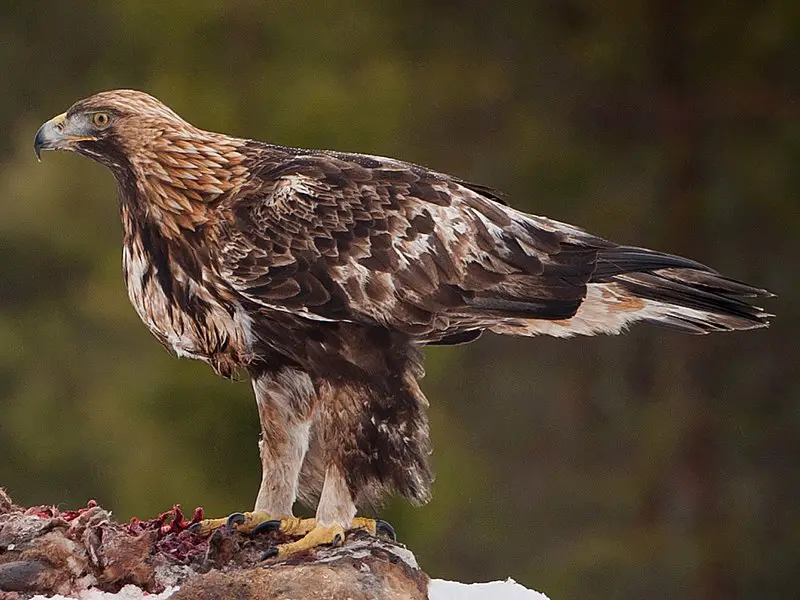
The Golden Eagle is an iconic bird of prey found throughout the northern hemisphere. It is a large, powerful raptor with dark brown feathers and lighter golden-brown plumage on its nape.
Immature eagles have white patches around their beaks, tails and wings which they lose as they mature.
Its diet consists mostly of small mammals such as rabbits, hares and marmots but can also include birds or reptiles depending on where it lives.
These majestic creatures are known for their remarkable strength in flight; using thermal updrafts to soar high into the sky searching for food or simply enjoying the view below them.
They are often seen soaring alone over open expanses looking out for potential threats from other predators like wolves or foxes that may encroach upon their territory.Scientific classification:
| Kingdom | Animalia |
| Phylum | Chordata |
| Class | Aves |
| Order | Accipitriformes |
| Family | Accipitridae |
| Genus | Aquila |
| Species | A. chrysaetos |
Also Featured In: Most Common Birds in China, Birds That Live in Colorado
2. Black Kite
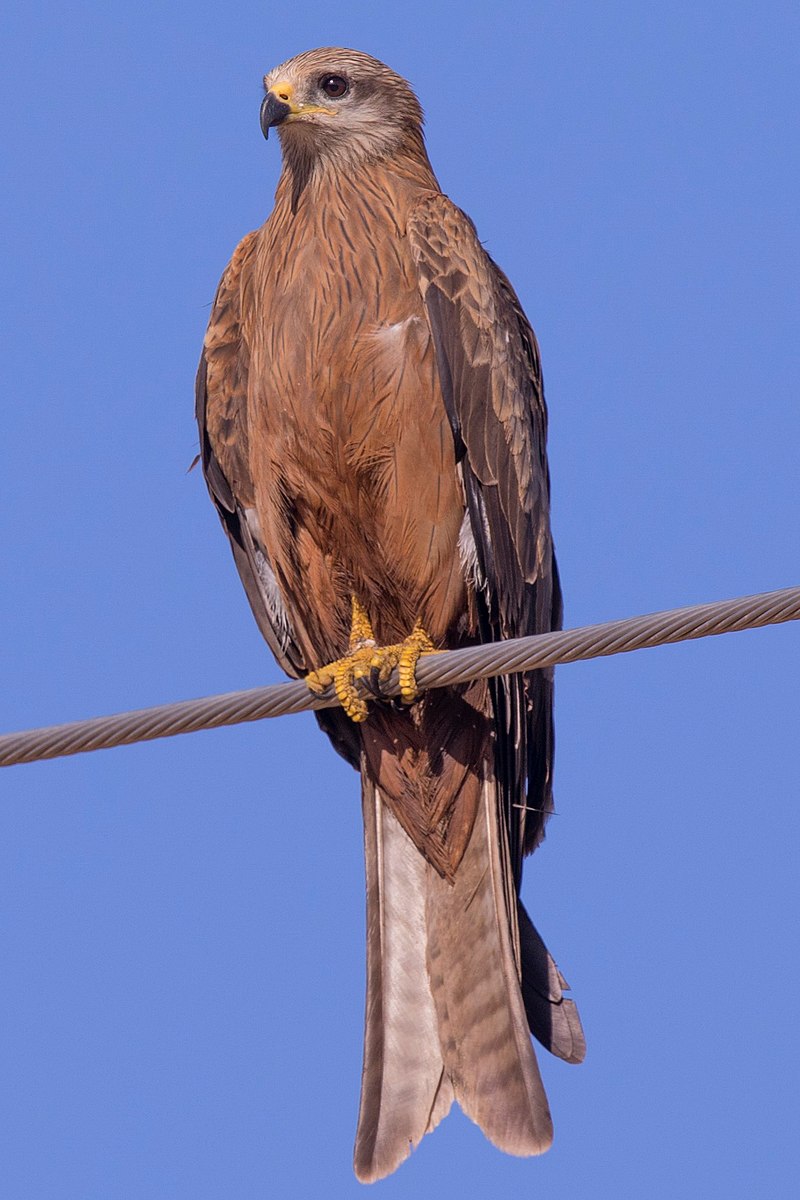
The black kite is one of the most abundant species of diurnal birds of prey in the world, with a global population estimated to be up to 6 million individuals.
It belongs to the family Accipitridae and has medium-sized body size. The wingspan can range from 150 cm – 180cm wide.
They have dark brown feathers on their back and light brown or grey underparts and long forked tails that help it maneuver through.
Its environment while hunting for food like insects, small mammals, reptiles etc., along with scavenging opportunities when available.
Black Kites are found across several continents including Europe, Africa, Asia Minor & Australia where they breed during spring in nests made among trees near wetlands or riversides;
migratory populations move southward away from winter cold temperatures as far east as India & Japan before returning home again next season.Scientific classification:
| Kingdom | Animalia |
| Phylum | Chordata |
| Class | Aves |
| Order | Accipitriformes |
| Family | Accipitridae |
| Genus | Milvus |
| Species | M. migrans |
Also Featured In: Common Birds in India, Summer Birds that Live around Us
3. Bald Eagle
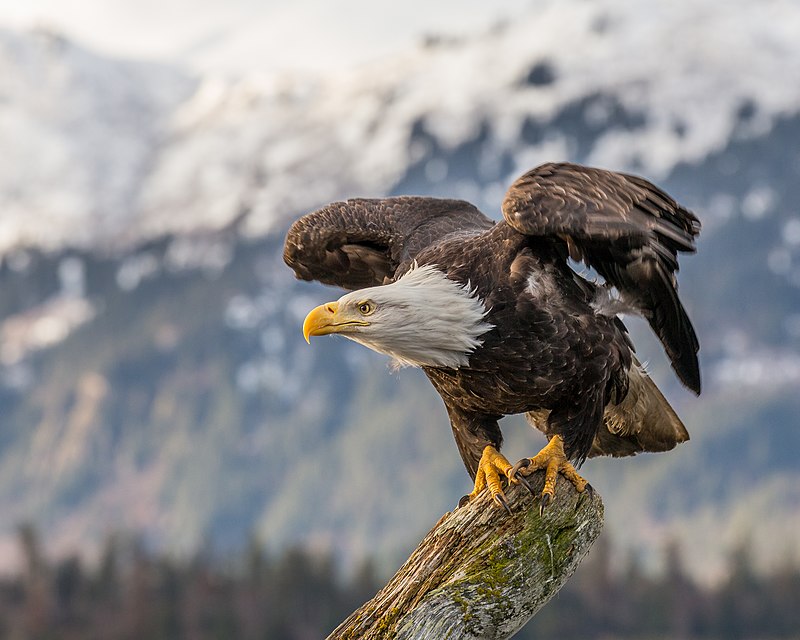
The majestic Bald Eagle is a bird of prey found in North America and recognized as the national symbol of the United States.
With its distinctive white head, brown body and striking yellow beak, this sea eagle has two known subspecies that form a species pair with the White-tailed Eagle.
It inhabits much of Canada, Alaska all states in the US contiguous area and Northern Mexico near large bodies of water where they feed mainly on fish.
These birds have an impressive wingspan ranging from 1.8 to 2 meters depending on their size making them one of nature’s most magnificent creatures.Scientific classification:
| Kingdom | Animalia |
| Phylum | Chordata |
| Class | Aves |
| Order | Accipitriformes |
| Family | Accipitridae |
| Genus | Haliaeetus |
| Species | H. leucocephalus |
Also Featured In: Most Common United States Birds, Birds Live in Arkansas
4. American Crow

The American crow is a large bird of the Corvidae family, native to most parts of North America.
It is similar in size and structure to its European counterpart, the carrion crow, as well as Eurasia’s hooded crow.
The three species occupy the same ecological niche, but are distinguishable by their differences in appearance.
American crows have black feathers covering their entire body with wingspan averaging between 17-21 inches wide for males and 16-19 inches for females.
They feed on insects such as grasshoppers, beetles and caterpillars; they also eat grains from fields or abandoned farms during winter months when food sources become scarcer.
In addition to feeding habits American crows can be identified by their distinct call which resembles a “caw” sound that travels long distances over open terrain making them popular among birdwatchers.Scientific classification:
| Kingdom | Animalia |
| Phylum | Chordata |
| Class | Aves |
| Order | Passeriformes |
| Family | Corvidae |
| Genus | Corvus |
| Species | C. brachyrhynchos |
Also Featured In: Birds Live Near San Diego, Birds Commonly Found in New York
5. Crested Caracara
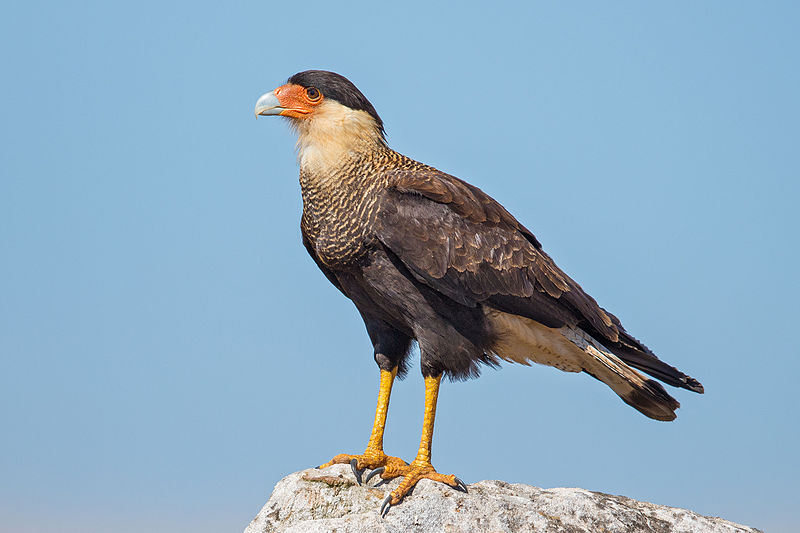
The Crested Caracara is a majestic bird of prey found from the Southern United States through Central and South America, all the way down to Tierra del Fuego.
It has an impressive wingspan ranging from 120-132 cm, with adults averaging 1,348 g in weight. This species is known for its characteristic crest on top of their head that can be raised when they are alarmed or excited.
They have pale yellow legs and feet along with dark brown feathers covering most of their body.
The Crested Caracara feeds mainly on carrion but will also take live food such as small mammals, reptiles and birds as well as garbage if it’s available near them.
These amazing raptors form strong family bonds between siblings which often last until adulthood; making them one of nature’s most remarkable creatures.Scientific classification:
| Kingdom | Animalia |
| Phylum | Chordata |
| Class | Aves |
| Order | Falconiformes |
| Family | Falconidae |
| Genus | Caracara |
| Species | C. plancus |
Also Featured In: Most Popular Bird Species in North America, Patagonia Birds You Should Know
6. Accipitridae
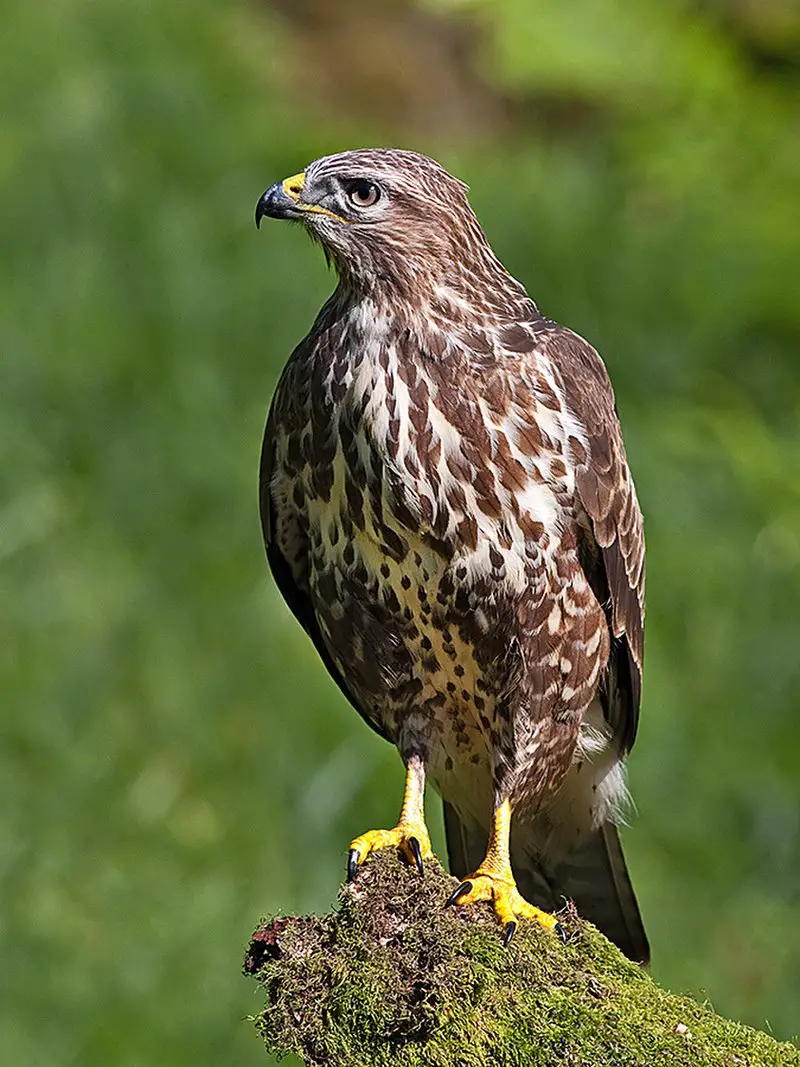
Accipitridae birds are a diverse family of raptors ranging in size from small to large. They have powerful hooked beaks which they use for hunting and tearing apart their prey, such as insects, medium-sized mammals and carrion.
Some species even feed on fruit. These birds can be found all over the world, making them an incredibly successful group of predators.
Accipitridae are adaptable hunters with keen eyesight that helps them spot potential meals from far away distances.
Their sharp talons assist them in grasping onto their victims while feeding or defending themselves against enemies.
Not only do these avian creatures provide us with visual beauty but also help keep our ecosystems healthy by keeping pest populations under control.Scientific classification:
| Kingdom | Animalia |
| Phylum | Chordata |
| Class | Aves |
| Order | Accipitriformes |
| Family | Accipitridae Vieillot, 1816 |
Also Featured In: Most Common Types of Bangladeshi Birds, Italian Birds You Should Know
7. Turkey Vulture
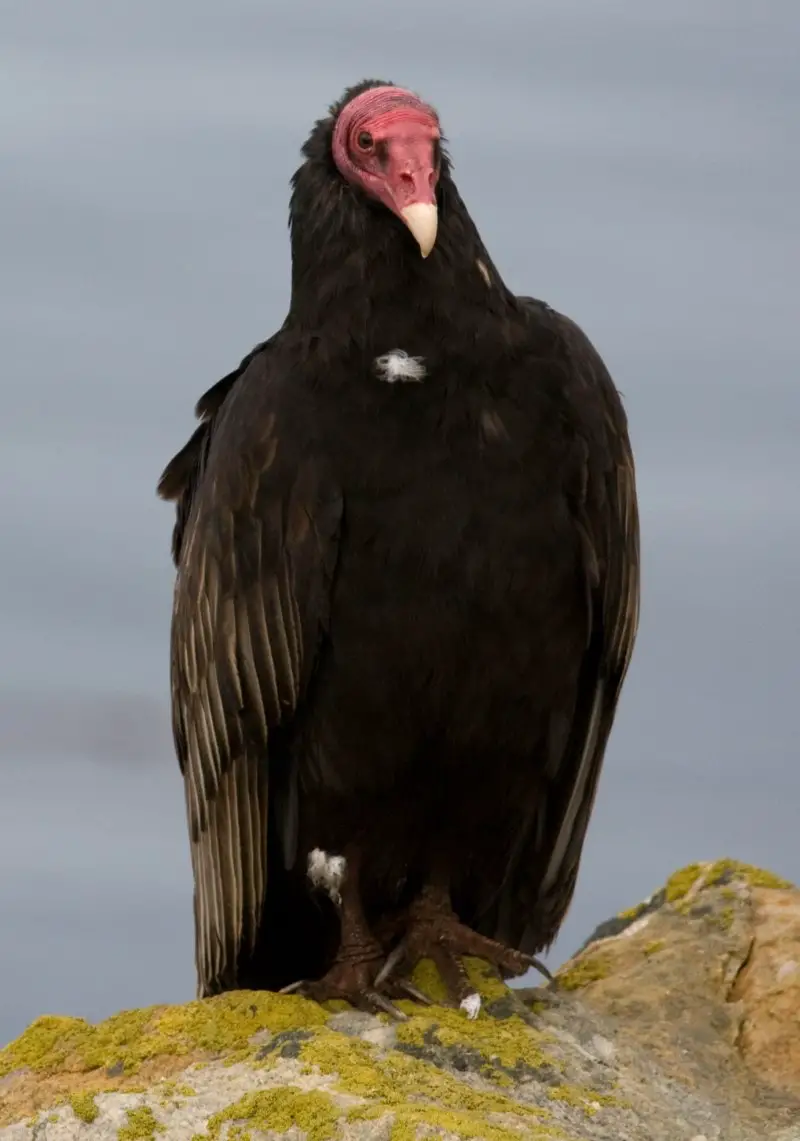
The turkey vulture is a large bird of prey that can be found in many parts of the world. It has a wingspan of up to 6 feet and its feathers are mostly black with brownish-red patches on the underside which give it an overall dark red appearance.
Its head is bald, which helps protect it from getting overheated when flying long distances looking for food.
The Turkey Vulture usually feeds off carrion but will also feed on fruit and insects.
Its keen eyesight allows them to spot potential meals from miles away while they soar through the sky using their broad wings and thermal air currents to stay aloft without expending much energy.
They are very important scavengers as they keep ecosystems healthy by consuming dead animals before disease can spread amongst living creatures or contaminate local water sources like rivers or lakesScientific classification:
| Kingdom | Animalia |
| Phylum | Chordata |
| Class | Aves |
| Order | Accipitriformes |
| Family | Cathartidae |
| Genus | Cathartes |
| Species | C. aura |
Also Featured In: Top Birds Found in Mexico, Birds that Live in the Deserts
8. Egyptian Vulture
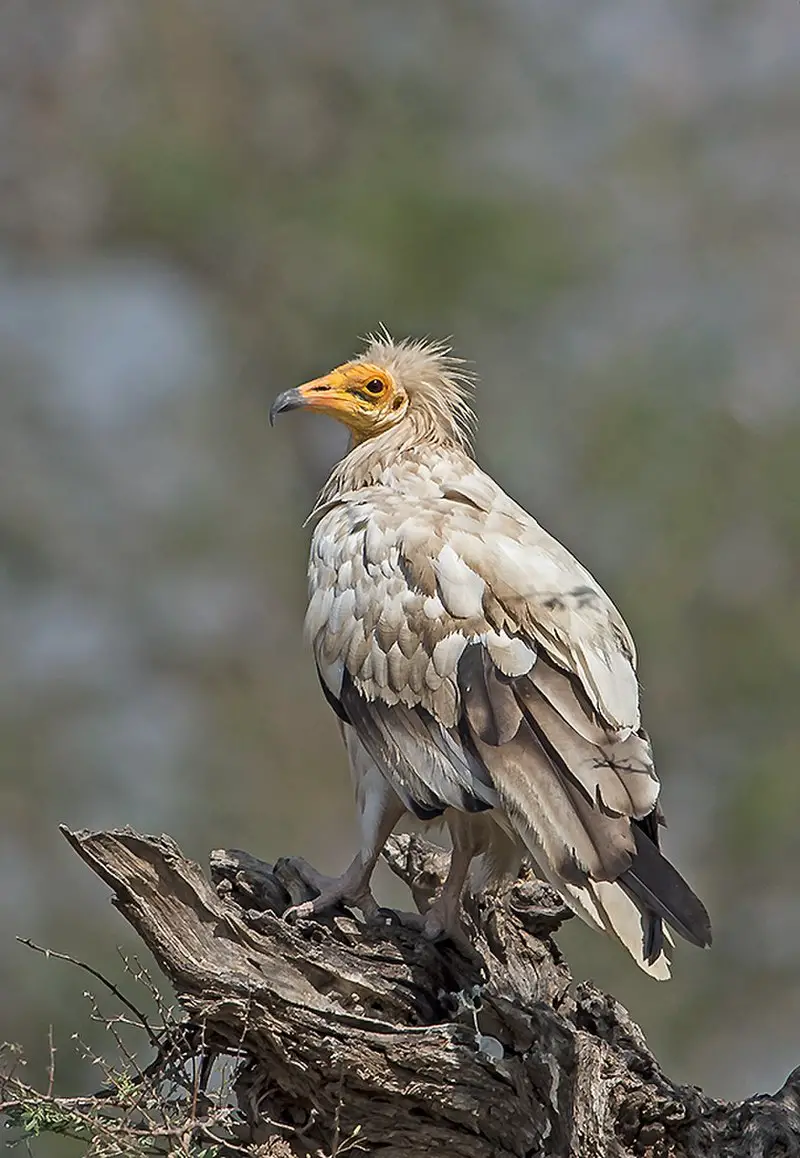
The Egyptian Vulture is a small Old World vulture known for its distinctive wedge-shaped tail and contrasting underwing pattern.
It has been found from the Iberian Peninsula through North Africa to India, making it one of the most widespread birds in that area.
This species eats mostly carrion but will also feed on eggs and small prey if they can find them. Its diet consists mainly of lizards, insects and other invertebrates as well as fruit like figs, grapes or mulberries when available.
The Egyptian Vulture plays an important role in ecosystems by helping to clean up carcasses which could otherwise spread disease or attract predators such as jackals into human settlements.
They are considered vulnerable due to threats including habitat destruction, electrocution from power lines and accidental poisoning – all factors contributing towards their decline in numbers across their rangeScientific classification:
| Kingdom | Animalia |
| Phylum | Chordata |
| Class | Aves |
| Order | Accipitriformes |
| Family | Accipitridae |
| Genus | Neophron Savigny, 1809 |
| Species | N. percnopterus |
Also Featured In: Egyptian Birds, Birds You’ll Find in Albania
9. Red Kite
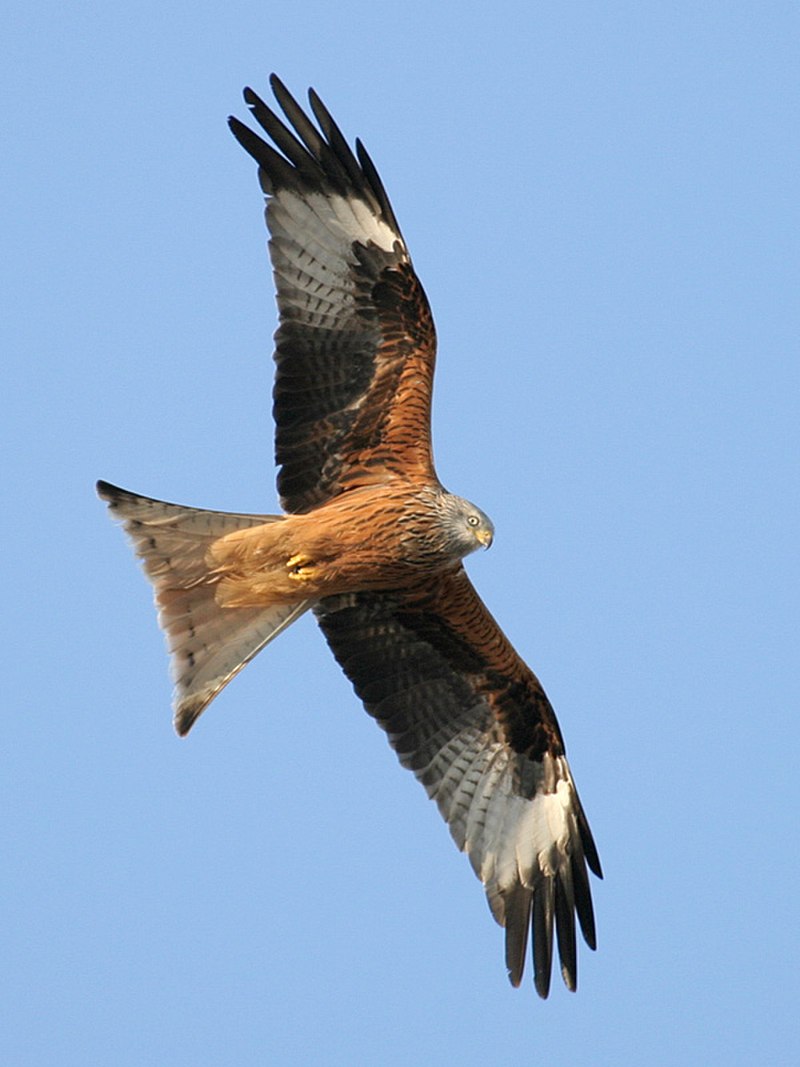
The Red Kite is a magnificent bird of prey, belonging to the family Accipitridae. It can be found in western Europe and northwest Africa where it breeds, while also occurring occasionally in northern Iran.
These birds are medium-large size with wingspans ranging from 125 – 170 cm wide. They have reddish brown plumage on their upperparts and pale gray underneath.
The Red Kite feeds mainly on small mammals, carrion and insects which they hunt for by soaring through the air using thermals to gain altitude before diving down onto its prey.
Furthermore, this species has adapted well to human presence since it often scavenges near roadsides or rubbish dumps as an easy source of food.
All things considered, these majestic creatures make up a beautiful part of our natural environment that should definitely not go unnoticed.Scientific classification:
| Kingdom | Animalia |
| Phylum | Chordata |
| Class | Aves |
| Order | Accipitriformes |
| Family | Accipitridae |
| Genus | Milvus |
| Species | M. milvus |
Also Featured In: Native Birds Of Germany, Common Slovakian Birds
10. Carrion Crow
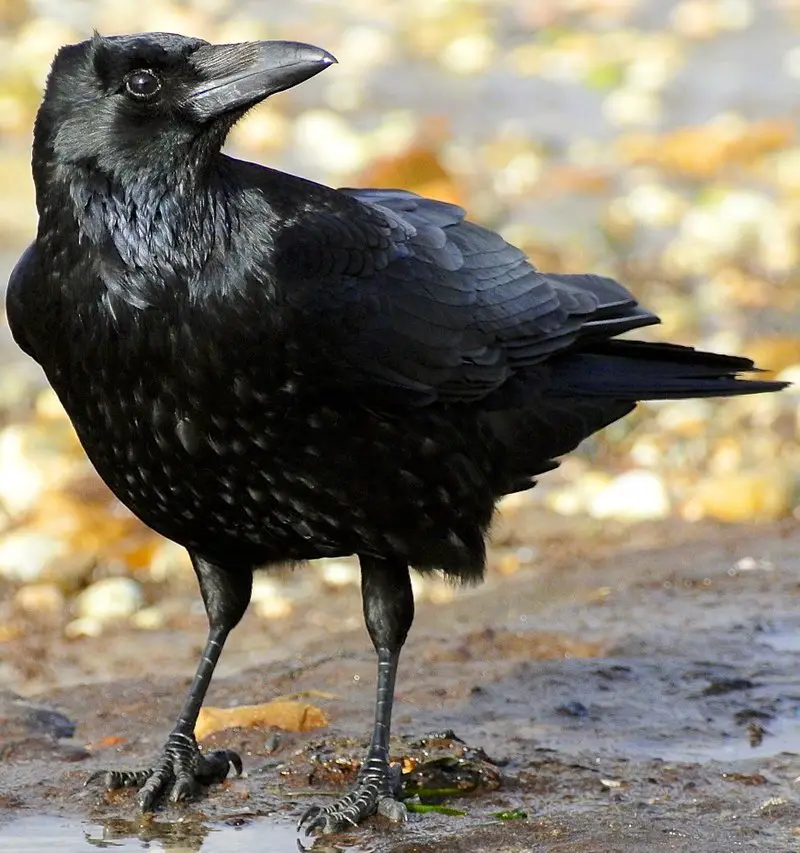
The Carrion Crow is a large, black bird that belongs to the family Corvidae and genus Corvus. Native to western Europe and Eastern Palearctic, it was one of the species described by Carl Linnaeus in his 1758 10th edition of Systema Naturae.
The name comes from Latin words meaning “crow” and “crown”. This crow has an unmistakable appearance; its entire body is covered in glossy black feathers with blue or purple iridescence on its wings when caught in sunlight.
Its diet consists mainly of carrion but they also eat insects, fruits, grains, nuts , eggs and small vertebrates such as young birds.
They are known for their intelligence which allows them to find food more easily than other corvid species due to their ability make tools out sticks or stones like humans do.Scientific classification:
| Kingdom | Animalia |
| Phylum | Chordata |
| Class | Aves |
| Order | Passeriformes |
| Family | Corvidae |
| Genus | Corvus |
| Species | C. corone |
Also Featured In: Birds of United Kingdom,
11. White-Backed Vulture
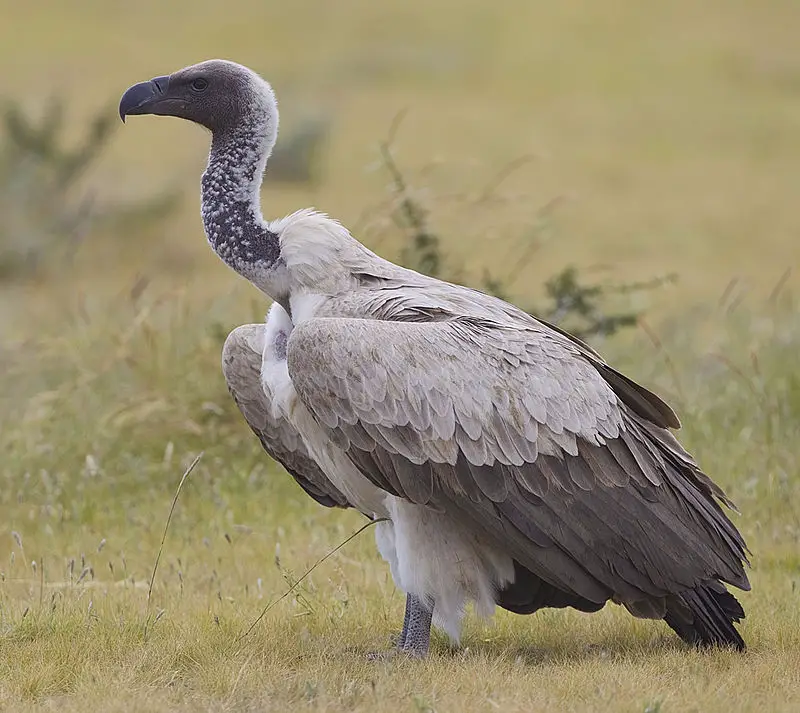
The White-backed Vulture, or Gyps africanus, is a species of Old World vultures that inhabits the African continent.
It has distinct features including down feathers on its head and neck as well as white ruff around its neck. Its wings are broad and its tail short.
This distinctive bird is primarily found in open habitats such as grasslands, savannahs, woodlands and wetlands where it feeds mainly on carrion from animals like wildebeests and zebras killed by other predators.
The White-backed Vulture plays an important role in maintaining balance within the food chain by helping to clean up carcasses left behind by larger carnivores which helps to reduce diseases caused by decaying matter while providing vital nutrients for scavenging birds like itself.Scientific classification:
| Kingdom | Animalia |
| Phylum | Chordata |
| Class | Aves |
| Order | Accipitriformes |
| Family | Accipitridae |
| Genus | Gyps |
| Species | G. africanus |
Also Featured In: Birds of Tanzania, East African Birds
12. Lappet-Faced Vulture
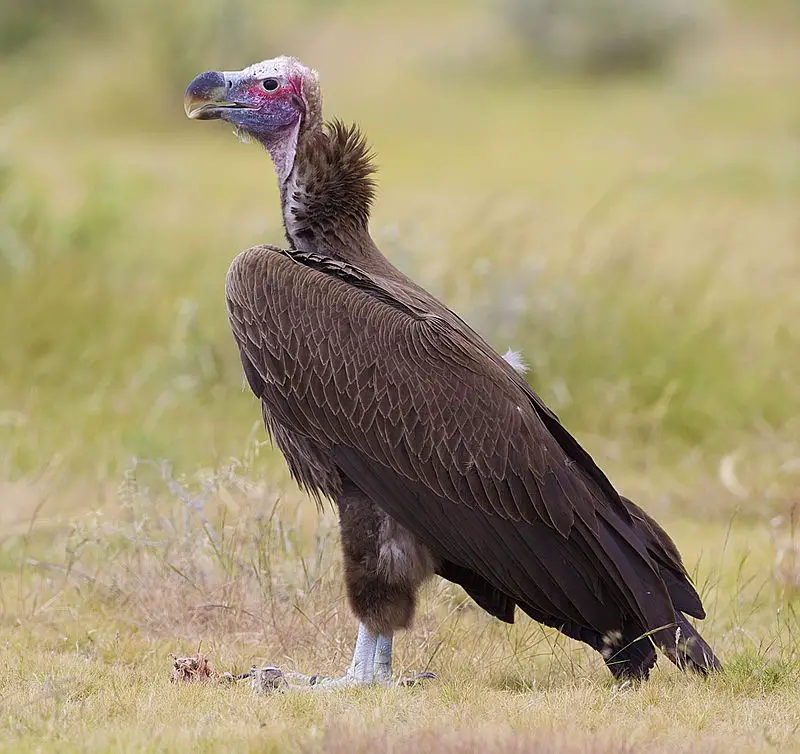
The Lappet-faced Vulture is a large bird of prey belonging to the Accipitriformes order. It has an unmistakable look, with its bare head and neck, white body and brown wings.
This species is native to Africa where it can be found in very dry areas such as deserts or semi-deserts. They feed mainly on carrion but they also eat small animals like lizards or rodents if needed.
Their strong bill helps them tear through tough hides while their long legs help them find food easier by allowing them to walk around looking for it instead of relying solely on soaring high up into the sky like other vultures do to locate carcasses from afar.
The Lappet-faced Vulture plays a crucial role in cleaning up carcasses which otherwise would spread diseases quickly throughout African ecosystems.Scientific classification:
| Kingdom | Animalia |
| Phylum | Chordata |
| Class | Aves |
| Order | Accipitriformes |
| Family | Accipitridae |
| Genus | Torgos Kaup, 1828 |
| Species | T. tracheliotos |
Also Featured In: Common Kenyan Birds, Birds that You’ll Find in Kruger national park
13. Marabou Stork
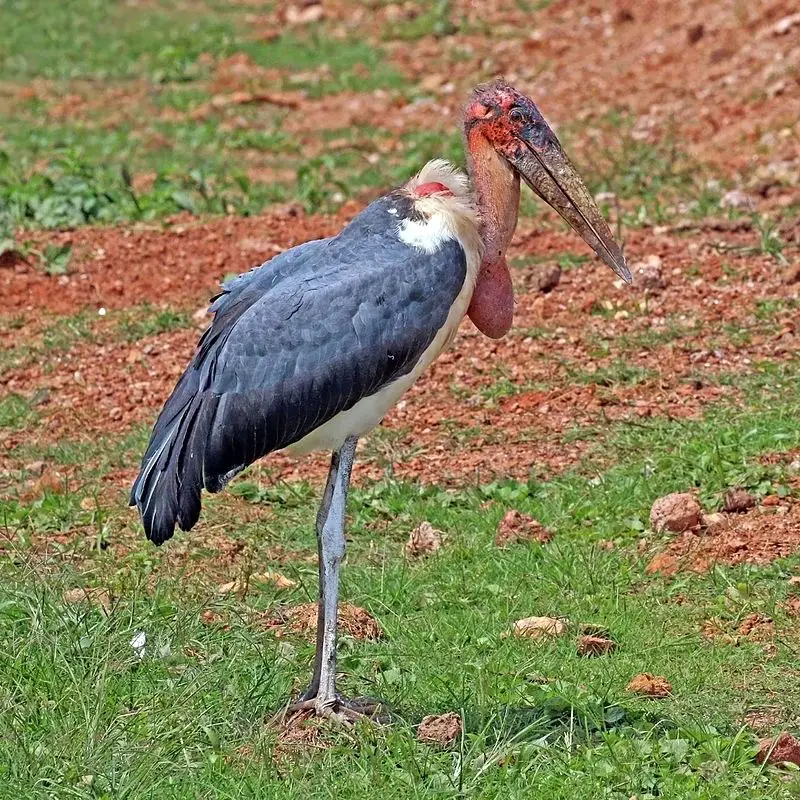
The marabou stork is a large wading bird native to sub-Saharan Africa. It has an unmistakable appearance, with cloak-like wings and back, skinny white legs and sometimes a large mass of “hair”.
They reside in both wet and arid habitats near human habitation, often found at landfill sites.
This species has earned the nickname ‘undertaker bird’ due to its unique shape viewed from behind.
Despite living alongside humans they remain elusive birds who rarely interact with us but can still be seen gliding on thermals or standing majestically by lakesides.
The marabou stork is truly an impressive sight that will stay in your memory forever.Scientific classification:
| Kingdom | Animalia |
| Phylum | Chordata |
| Class | Aves |
| Order | Ciconiiformes |
| Family | Ciconiidae |
| Genus | Leptoptilos |
| Species | L. crumenifer |
Also Featured In: Birds You’ll Find in Kenya Safari, Large African Birds You Need to Know
14. Cinereous Vulture
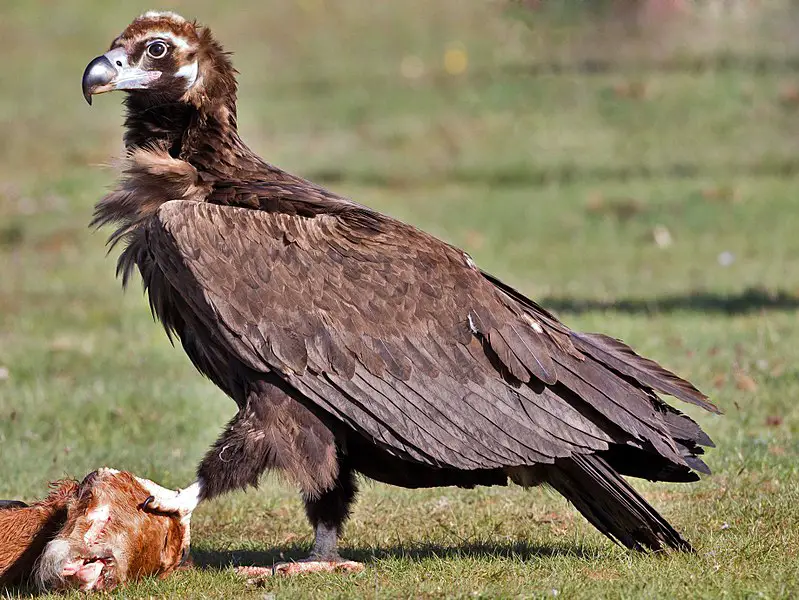
The cinereous vulture, also known as the black vulture, monk vulture and Eurasian black vuture is a large raptor found in temperate Eurasia. It has an impressive wingspan of 3.1 metres (10 feet) with a body length of 1.2 metres (3 ft 11in).
They are the largest Old World Vultures and can reach weights up to 14 kilograms(31 lbs).
Their diet consists mainly of carrion but they have been recorded taking live prey such as rodents or hares which allows them to search for food over wide areas quickly.
These birds usually hunt alone during daylight hours due their eyesight being well adapted at picking out carcasses from far away distances while soaring high in the sky above open grasslands or wooded hillsides where they breed seasonally between late winter and early autumn typically laying one egg per pair each year.Scientific classification:
| Kingdom | Animalia |
| Phylum | Chordata |
| Class | Aves |
| Order | Accipitriformes |
| Family | Accipitridae |
| Genus | Aegypius |
| Species | A. monachus |
Also Featured In: Native South Korean Birds, Armenian Birds You Should Know
15. Andean Condor
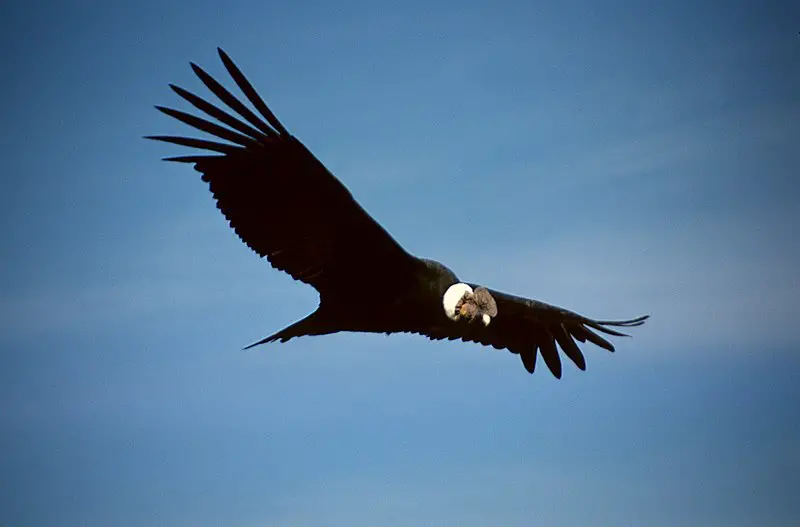
The Andean condor is a giant South American Cathartid vulture and the only member of its genus.
Found in the Andes mountains and along Pacific coasts, it is thought to be the largest flying bird on Earth by weight and wingspan with a maximum wingspan reaching up to 10 feet 10 inches (3.3 m) and weighing 33 lbs (15 kg).
It has mainly black plumage which helps keep it warm at high altitudes, while white patches adorn its head, neck, chest as well as underwing coverts.
Its powerful bill allows it to consume carrion efficiently while also being able to crack bones for nutrition when necessary.
The amazing flight capabilities of this majestic creature allow them soar through air thermals effortlessly; making them an impressive sight against clear blue skies.Scientific classification:
| Kingdom | Animalia |
| Phylum | Chordata |
| Class | Aves |
| Order | Accipitriformes |
| Family | Cathartidae |
| Genus | Vultur Linnaeus, 1758 |
| Species | V. gryphus |
Also Featured In: Common Birds in Colombia, Aviary Birds You Should Know
16. King Vulture
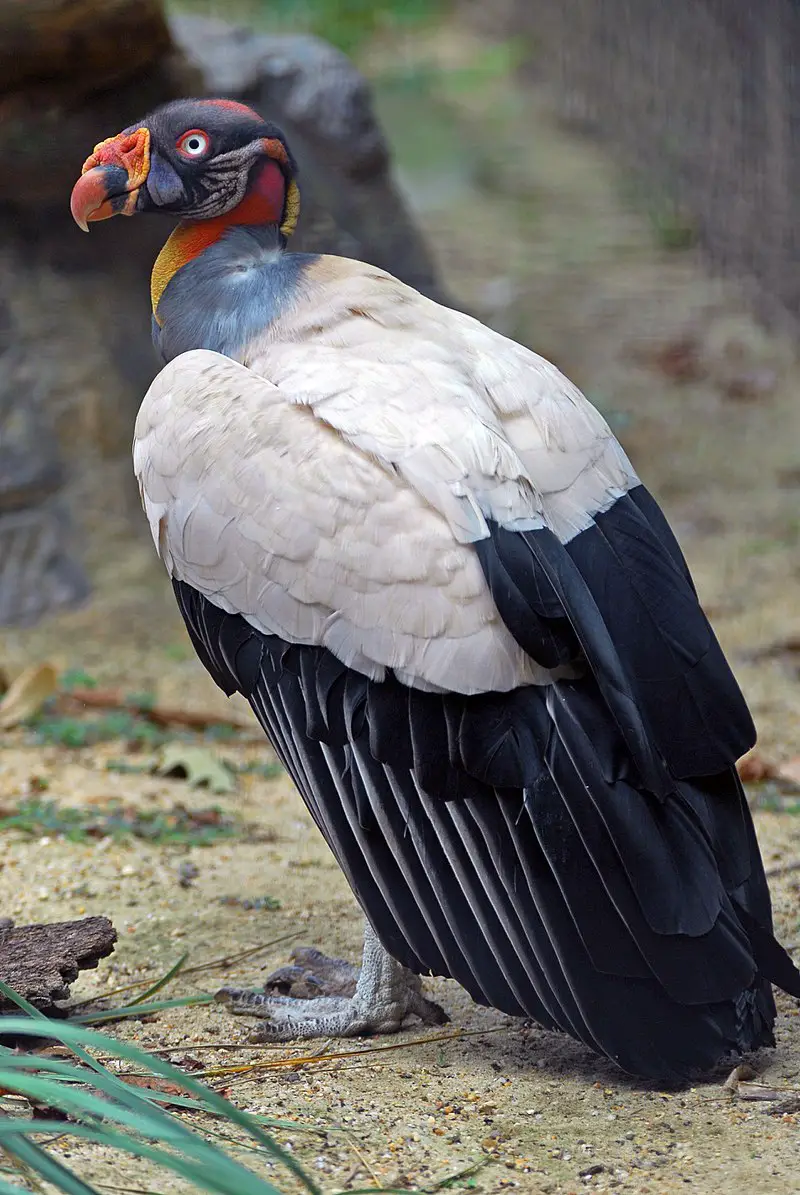
The King Vulture is a majestic bird found in Central and South America. It has striking white plumage with black accents, and its head is topped by a bright yellow crest.
With long wingspan of up to 4 feet, this vulture soars gracefully through the sky. Its large size allows it to dominate other scavenging birds at carcasses; although not as powerful as some raptors, the king vulture will protect what belongs to it fiercely.
The diet of these elegant creatures consists mainly of carrion such as dead mammals or fish that they spot from far away using their excellent vision.
They also occasionally eat eggs or nestlings if food is scarce during dry seasons.
This fascinating species plays an important role in keeping ecosystems healthy by removing dead animals from landscapes quickly before diseases spread further into populationsScientific classification:
| Kingdom | Animalia |
| Phylum | Chordata |
| Class | Aves |
| Order | Accipitriformes |
| Family | Cathartidae |
| Genus | Sarcoramphus |
| Species | S. papa |
Also Featured In: Birds That Live in the Jungle, Rainforest Birds You Should Know
17. Common Raven
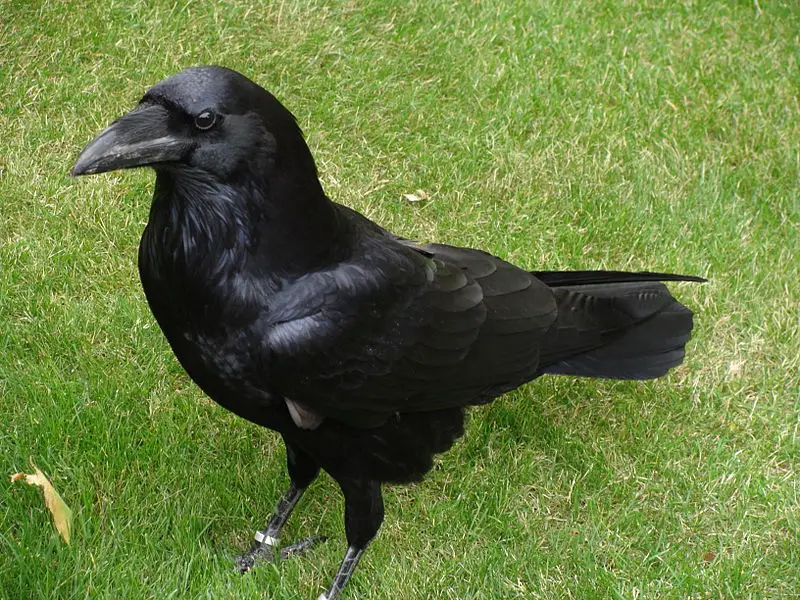
The Common Raven is an iconic black bird found throughout the Northern Hemisphere. It belongs to the Corvus corax species of passerines, and has at least eight subspecies with little physical variation between them.
Recent research however suggests there are significant genetic differences among populations from various areas.
They have a large wingspan of up to 1m and their call can be heard over great distances due to its deep croaking sound; they also use mimicry for communication purposes like many other birds do.
The ravens diet consists mostly of carrion, insects and fruits but they will scavenge in human settlements as well when food sources become scarce.
Their nests require plenty of space so these birds prefer open habitats such as tundra or mountain regions- ideal conditions for their long distance migrations.Scientific classification:
| Kingdom | Animalia |
| Phylum | Chordata |
| Class | Aves |
| Order | Passeriformes |
| Family | Corvidae |
| Genus | Corvus |
| Species | C. corax |
Also Featured In: Birds of Poland, Most Common Nature Birds
18. Black Vulture
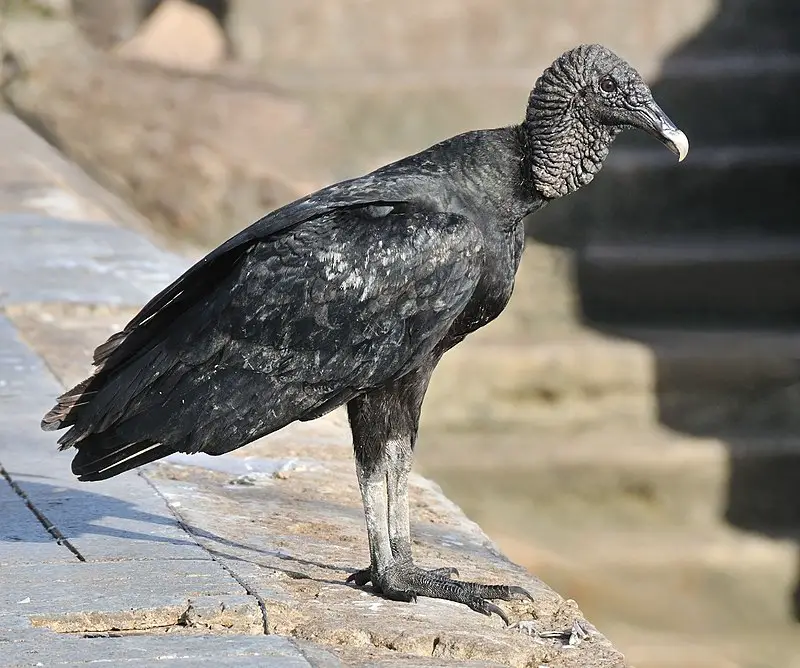
The black vulture is a common and widespread species of New World Vultures, found in the northeastern United States all the way to Peru, Central Chile and Uruguay.
It’s distinctive appearance has earned it many nicknames such as zopilote, urubu or gallinazo.
This medium-sized bird has mainly black plumage with some white markings on its wings and head; also featuring a long bill for scavenging carrion from carcasses.
Despite being able to fly up high due to its broad wingspan, it prefers keeping close to ground level when searching for food items like dead fish or small mammals that are available near human settlements.
As an apex predator they play an important role in nature by helping keep their environment clean while providing other animals with sustenance through their leftovers.Scientific classification:
| Kingdom | Animalia |
| Phylum | Chordata |
| Class | Aves |
| Order | Accipitriformes |
| Family | Cathartidae |
| Genus | Coragyps |
| Species | C. atratus |
Also Featured In: Most Common Birds Found in Chile, Birds that Live around Central Florida
19. New World Vultures
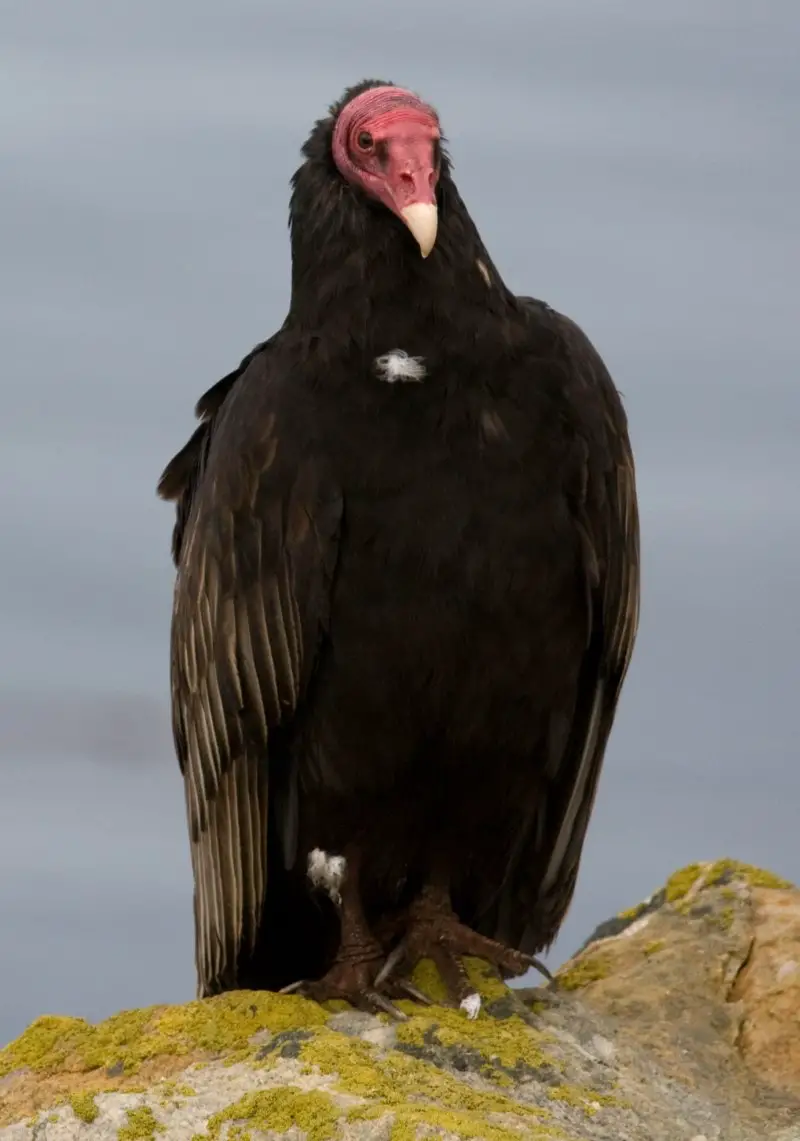
New World vultures are a large group of birds found in the Americas. They belong to the family Cathartidae and consist of seven species across five genera.
These include five vulture species, such as the Black Vulture, Turkey Vulture, King Vulture and more; as well as two condor species which live in warmer climates.
During Neogene times these “New World” vultures were widespread both in North America and Old World regions alike.
While they do not form one single clade with their counterparts from other parts of the world, they differ genetically but still share similar characteristics including bald heads without feathers or beaks used for scavenging carrion off carcasses on land or water surfaces.Scientific classification:
| Kingdom | Animalia |
| Phylum | Chordata |
| Class | Aves |
| Order | Accipitriformes |
| Family | Cathartidae Lafresnaye, 1839 |
Also Featured In: Birds of Ecuador, Birds that Live in Newfoundland and Labrador
20. Crows
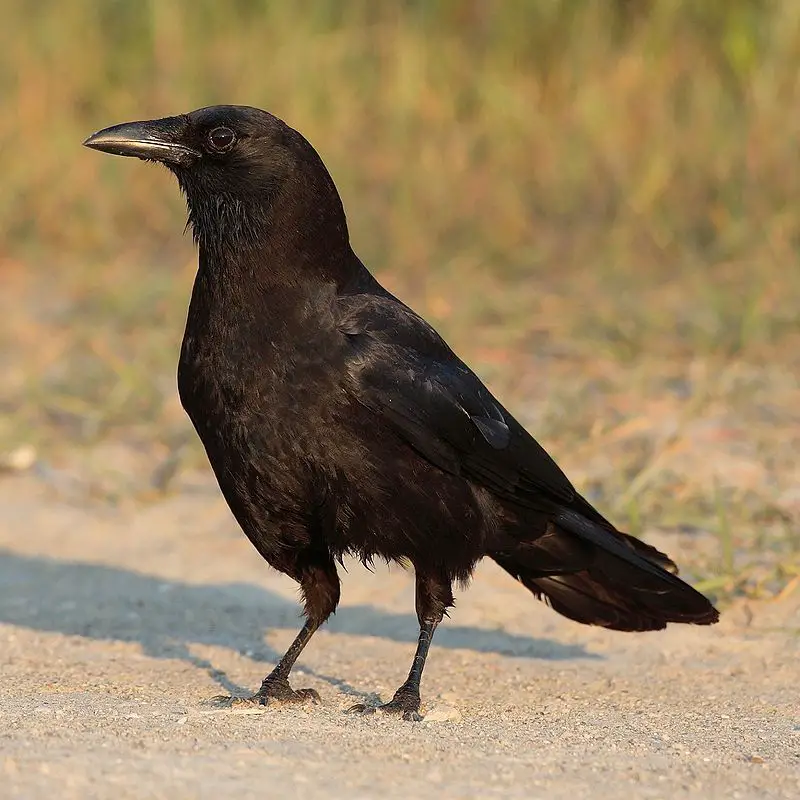
Crows are medium to large birds with a wide range of species belonging to the Corvidae family. They can be found in Europe, Asia, America and Australia.
Common crows include carrion crow, hooded crow, common raven and rooks which differ mainly by size; crows being generally smaller than their counterparts.
Crows have distinctive black feathers that contrast against their white eyes while they possess an intelligence far beyond other birds as they will use tools for tasks like cracking open nuts or making nests out of twigs.
Their curious nature makes them great problem-solvers when faced with challenging situations such as finding food sources or navigating new terrain.Scientific classification:
| Kingdom | Animalia |
| Phylum | Chordata |
| Class | Aves |
| Order | Passeriformes |
| Family | Corvidae |
| Subfamily | Corvinae |
| Genus | Corvus Linnaeus, 1758 |
Also Featured In: Birds of Netherlands, Birds of Symbolism
21. White-Rumped Vulture
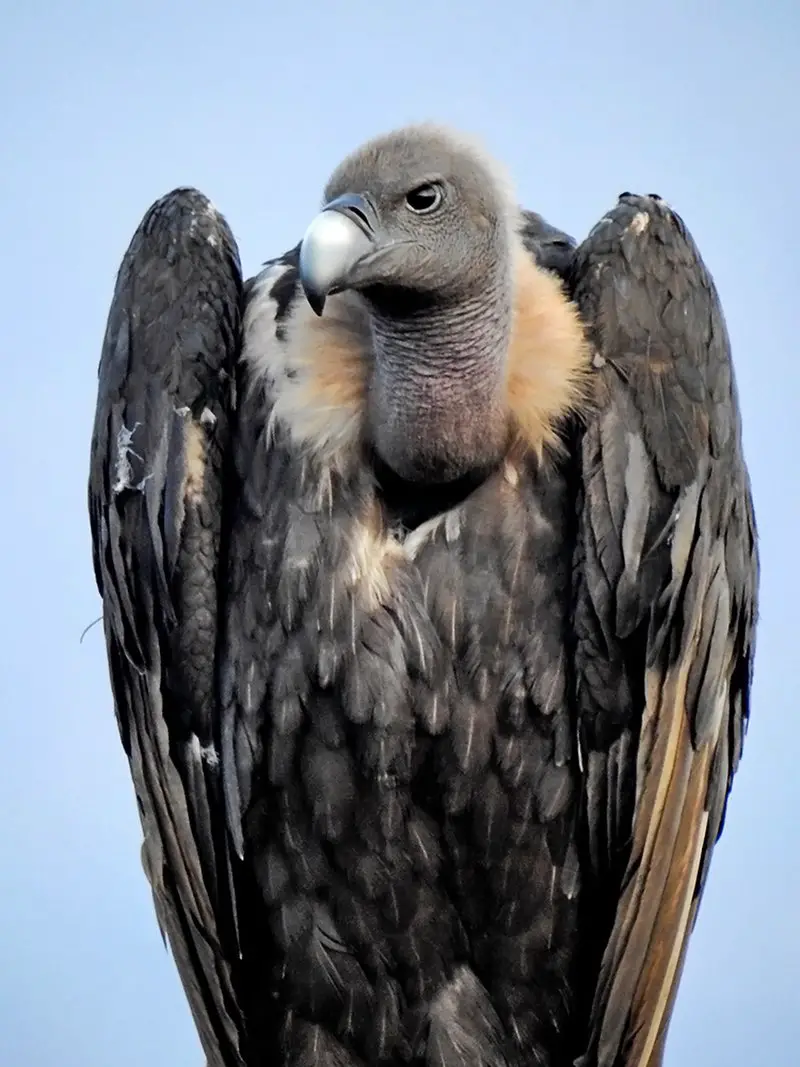
The white-rumped vulture is an Old World species found mainly in South and Southeast Asia. Sadly, it has been listed as Critically Endangered by the IUCN Red List since 2000 due to a severe decline in its population numbers.
The cause of this rapid drop is diclofenac poisoning which leads to kidney failure for these birds.
In the 1980s there were estimated to be several million individuals, but now their numbers have dropped drastically with some experts estimating them at fewer than 10 thousand breeding pairs left today.
Conservation efforts are underway across numerous countries to help save this unique species from extinction and raise awareness about the dangers posed by diclofenac pollution on wildlife populations around the world.Scientific classification:
| Kingdom | Animalia |
| Phylum | Chordata |
| Class | Aves |
| Order | Accipitriformes |
| Family | Accipitridae |
| Genus | Gyps |
| Species | G. bengalensis |
Also Featured In: Birds of Cambodia, Gujarati Birds
22. Red-Tailed Hawk
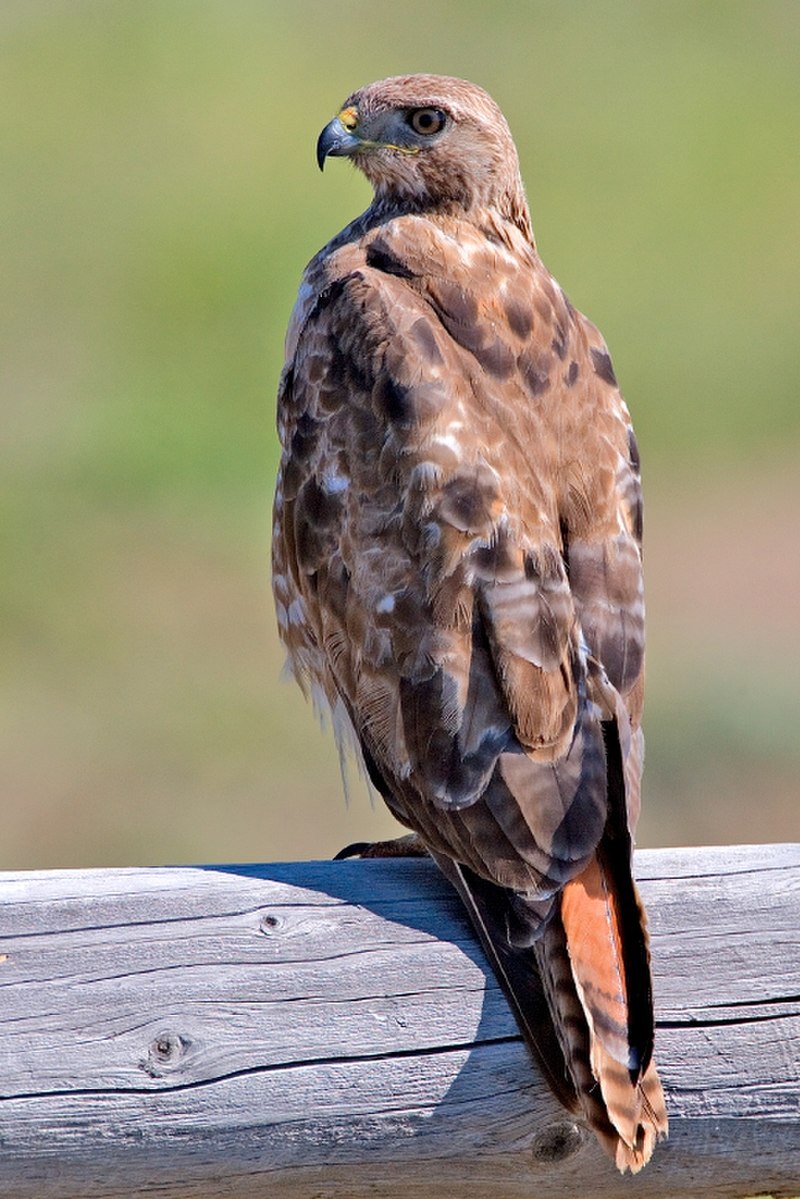
The Red-tailed Hawk is a majestic bird of prey with its distinctive red tail. It can be found throughout North America, from Alaska in the north to Panama and the West Indies in the south.
This species belongs to Buteo genus, which makes it one of most common raptors on earth.
These hawks mainly hunt small mammals such as rabbits or squirrels but also feed on reptiles and birds during migration season.
Unlike other predator birds, they prefer open areas for hunting like fields or grasslands rather than dense forests.
They build their nests high up on trees where they stay all year long unless disturbed by humans or animals nearby.
Their presence has become an iconic part of American culture due to their frequent sightings around homes and parks alike making them beloved creatures among people everywhere.Scientific classification:
| Kingdom | Animalia |
| Phylum | Chordata |
| Class | Aves |
| Order | Accipitriformes |
| Family | Accipitridae |
| Genus | Buteo |
| Species | B. jamaicensis |
Also Featured In: Dominican Republic birds, New Hampshire Birds You Should Know
23. Eurasian Griffon Vulture
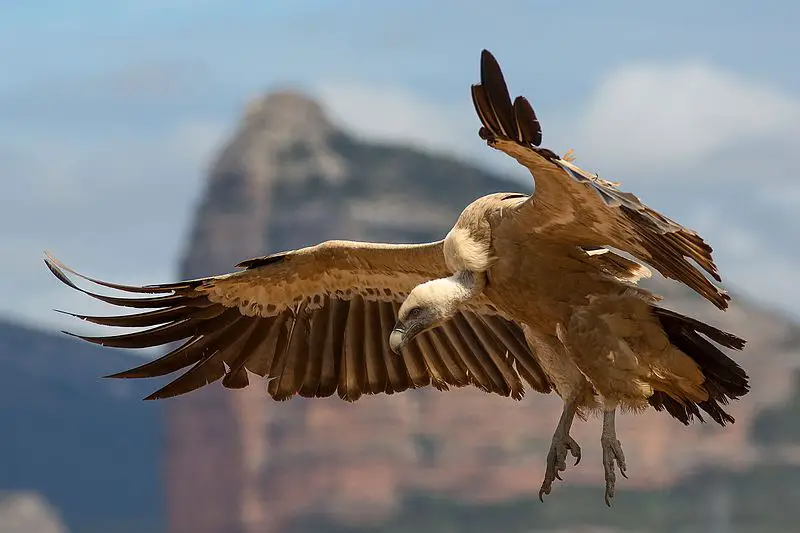
The Eurasian griffon vulture (Gyps fulvus) is an impressive Old World bird of prey. It has a wingspan that can reach up to 4.8 meters and is usually between 93-122 cm in length.
Its body feathers are dark brown with lighter areas on its head, chest and wings while the underside of its tail and flight feathers are white.
This species feeds primarily on carrion but will also scavenge for food when necessary; they have been known to form large groups in order to increase their chances of finding a meal or being able to steal one from another group member.
The Griffon Vulture’s natural habitat ranges across Europe, Asia Minor, North Africa into parts of India as well as some islands off the coast such as Crete and Cyprus.
They nest fairly high up either alone or in small colonies – often using old nests built by other birds like eagles or storks to save time.Scientific classification:
| Kingdom | Animalia |
| Phylum | Chordata |
| Class | Aves |
| Order | Accipitriformes |
| Family | Accipitridae |
| Genus | Gyps |
| Species | G. fulvus |
Also Featured In: Birds found in portugal, Birds that Live in Croatia
24. Bearded Vulture
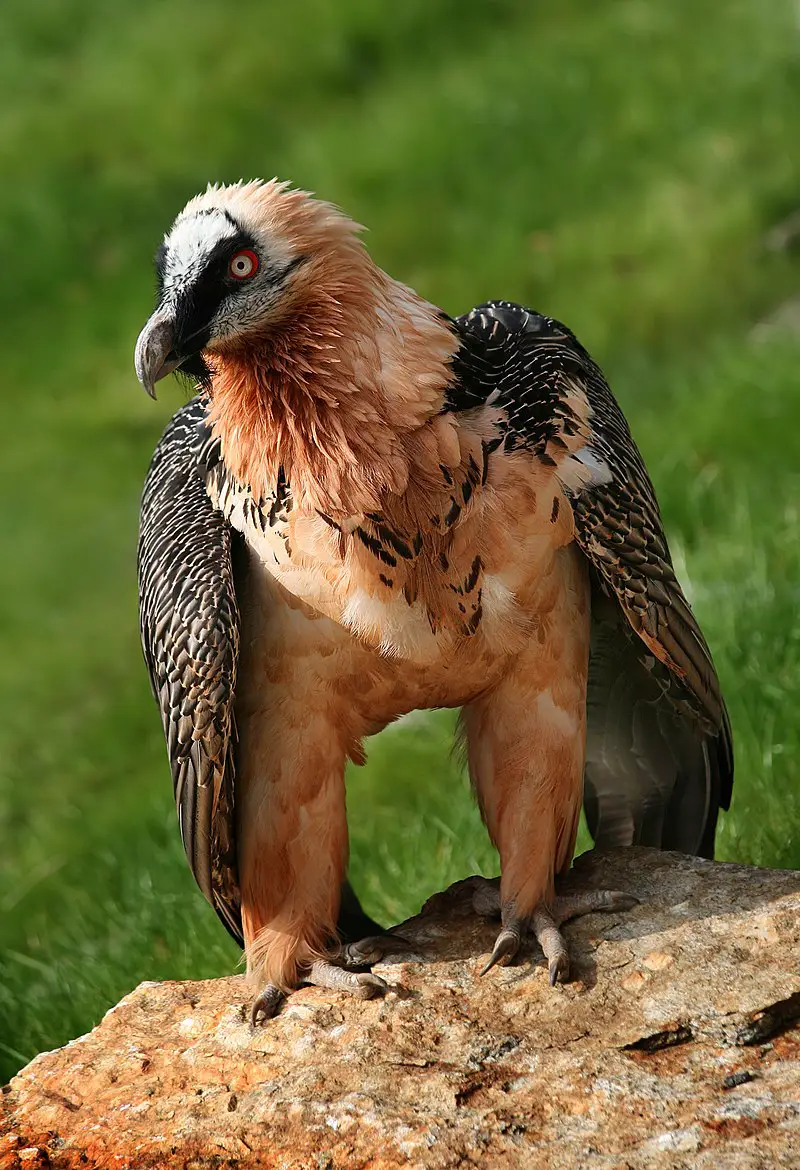
The Bearded vulture, also known as the lammergeier and ossifrage, is a majestic bird of prey belonging to its own genus within Accipitridae. It has an impressive wingspan that can reach up to 2.5m wide.
Its habitat ranges from Europe through Africa and into parts of Asia, where it prefers rocky areas with cliffs or mountainsides for nesting sites.
The bearded vulture’s diet consists mainly of carrion but it will occasionally feed on small mammals such as rabbits or hares too – using their powerful beak to crack open bones in order to get at the nutritious marrow inside.
These birds are highly endangered due primarily to human interference so conservation efforts must continue in order for us all have them around for future generations.Scientific classification:
| Kingdom | Animalia |
| Phylum | Chordata |
| Class | Aves |
| Order | Accipitriformes |
| Family | Accipitridae |
| Genus | Gypaetus Storr, 1784 |
| Species | G. barbatus |
Also Featured In: Common Birds Found in Switzerland, Most Common Spain Birds
25. Cape Vulture
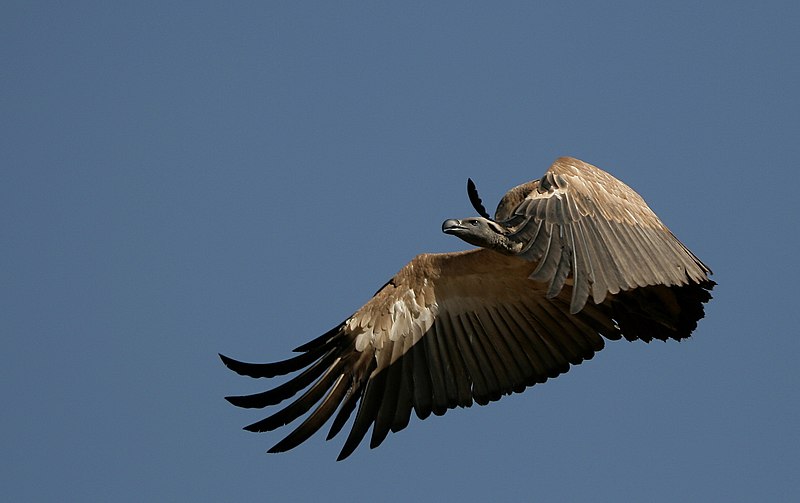
The Cape Vulture is an endangered Old World vulture found in southern Africa. It has also been called the Cape Griffon and Kolbe’s Vulture and lives mainly in South Africa, Lesotho, Botswana, and northern Namibia.
This species nests on cliffs and usually lays one egg per year.
Unfortunately its numbers have decreased drastically due to human activities such as loss of habitat or electrocution from power lines.
It was considered Endangered by IUCN until 2015 when it was down-listed to Near Threatened status thanks to conservation efforts that are helping preserve this majestic bird.Scientific classification:
| Kingdom | Animalia |
| Phylum | Chordata |
| Class | Aves |
| Order | Accipitriformes |
| Family | Accipitridae |
| Genus | Gyps |
| Species | G. coprotheres |
Also Featured In: Lesotho birds,
26. Western Marsh Harrier
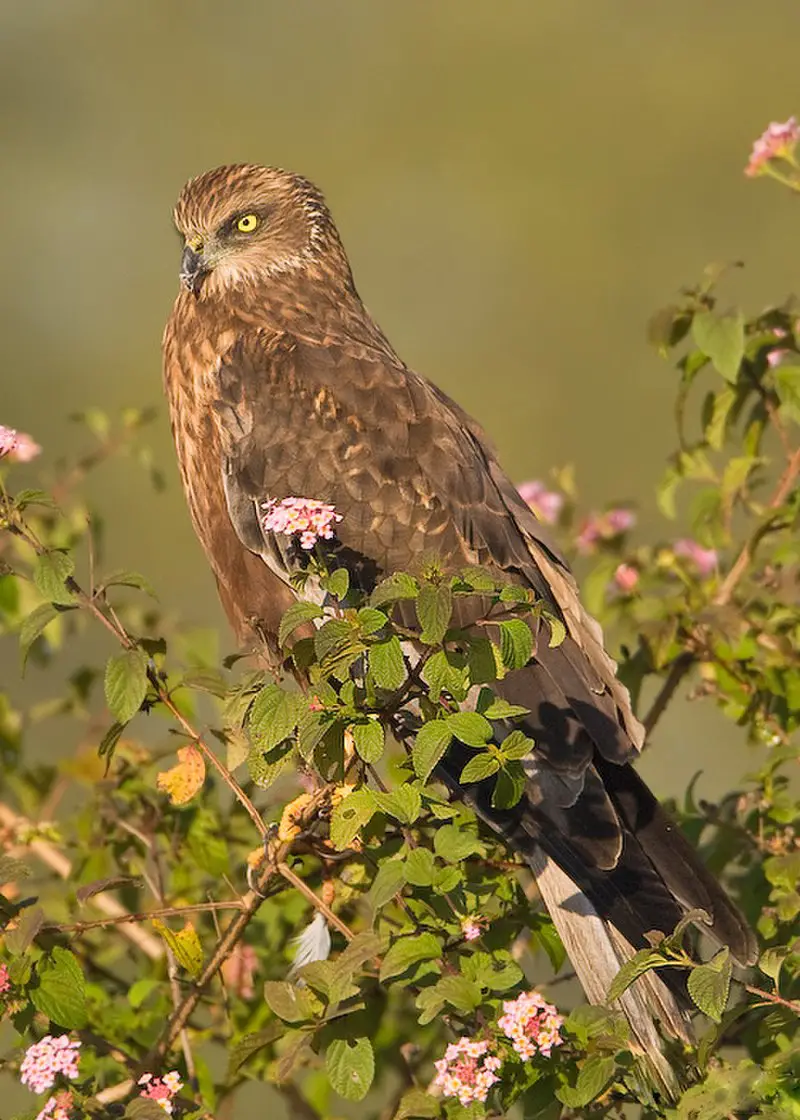
The Western marsh harrier is a large bird of prey that is found throughout temperate and subtropical regions in western Eurasia and Africa.
It has greyish brown plumage with white patches on the underside, yellow eyes, long legs and wingspan reaching up to 1 meter.
This species mainly feeds on small mammals such as rodents and voles which it catches by swooping down from above while flying over marshes or wetlands.
Nesting usually occurs in tall trees near water bodies where they build their nests made out of sticks lined with grasses or feathers.
The female lays 3-5 eggs during breeding season which hatch after an incubation period of 31 days.
They are known for making loud calls when defending its territory against other birds like buzzards and eaglesScientific classification:
| Kingdom | Animalia |
| Phylum | Chordata |
| Class | Aves |
| Order | Accipitriformes |
| Family | Accipitridae |
| Genus | Circus |
| Species | C. aeruginosus |
Also Featured In: Malta birds, Most Common Lithuanian Birds
27. California Condor
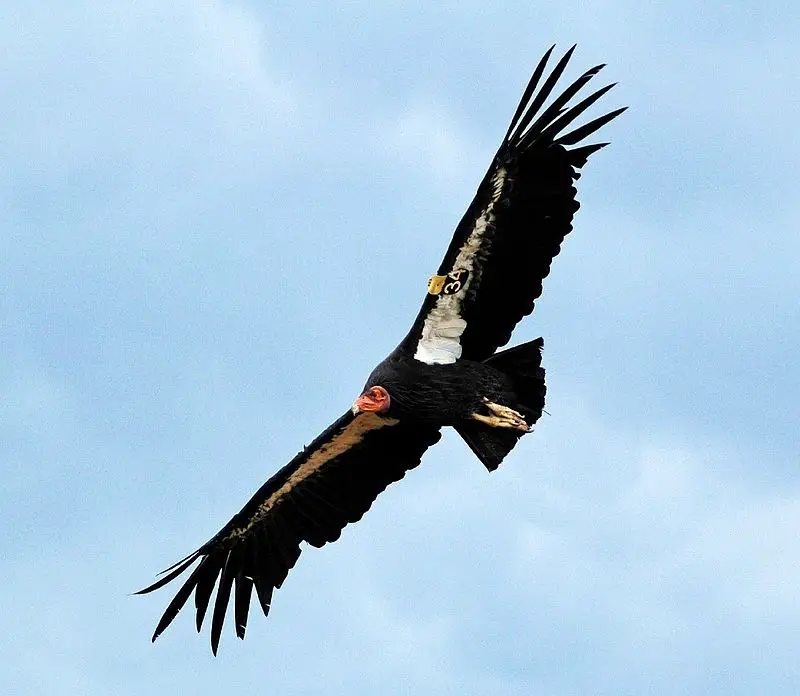
The California condor is a majestic bird, being the largest North American landbird. It was sadly pushed to extinction in the wild back in 1987 when all remaining individuals were captured.
Since then, conservation efforts have allowed for reintroductions of these birds into areas such as northern Arizona and southern Utah, including Zion National Park and Grand Canyon area; coastal mountains of California; and northern Baja California.
The species has been given plenty of protection with numerous laws created to protect it from human interference or disturbance while also helping boost its population size through captive breeding programs.
Thanks to this effort we can now enjoy seeing this incredible species flying across our skies once more.Scientific classification:
| Kingdom | Animalia |
| Phylum | Chordata |
| Class | Aves |
| Order | Accipitriformes |
| Family | Cathartidae |
| Genus | Gymnogyps |
| Species | G. californianus |
Also Featured In: Common Californian Birds, Birds You’ll Find in Zoo
28. Coragyps
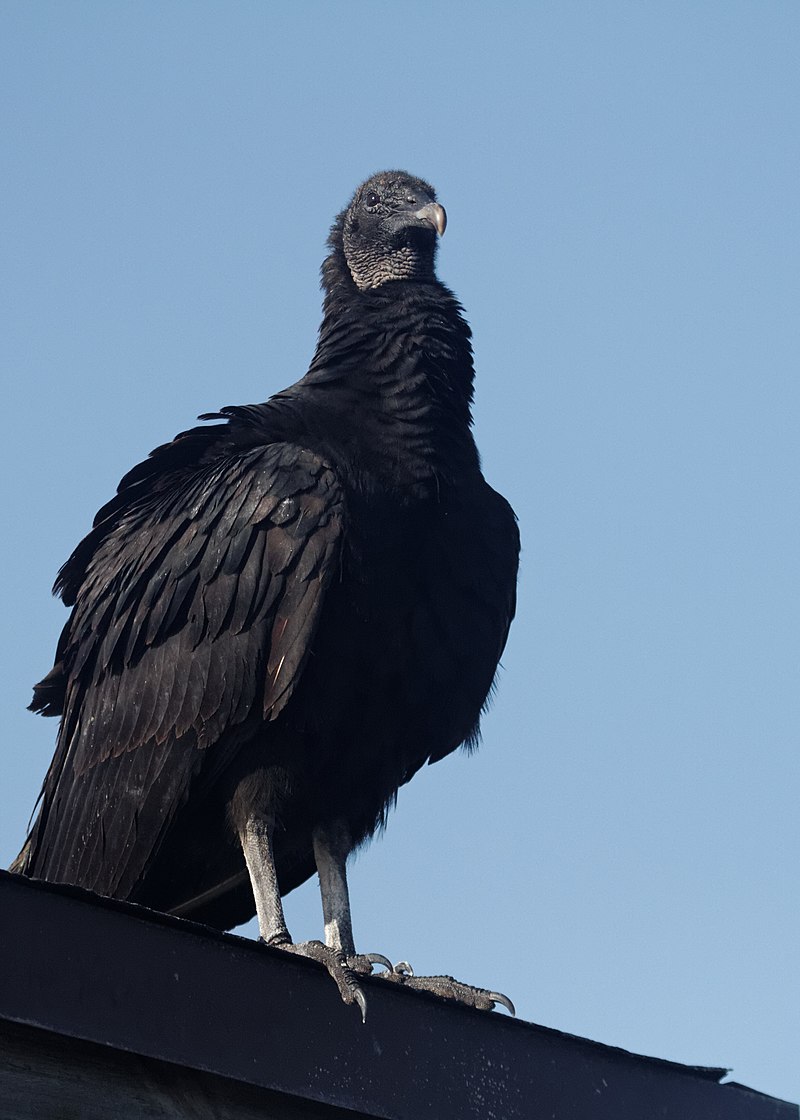
Coragyps is a genus of New World vultures that consists of the black vulture (Coragyps atratus) and two extinct relatives. The western black vulture, Coragyps occidentalis, was an ancestral species to C.
atratus found throughout North America during much of the Pleistocene epoch. However, recent genetic evidence suggests it may not be its own distinct species after all.
These birds are medium-sized with dark plumage on their backs and wings while having paler feathers underneath them; they have a bald head which helps keep them cool in hot climates by allowing heat to escape through evaporation off of their skin.
They typically feed on carrion or scavenge for food near human settlements due to reduced competition from other predators like eagles or hawks in those areas.Scientific classification:
| Kingdom | Animalia |
| Phylum | Chordata |
| Class | Aves |
| Order | Accipitriformes |
| Family | Cathartidae |
| Genus | Coragyps Le Maout, 1853 |
Also Featured In: birds of black,
29. Turkey Vultures
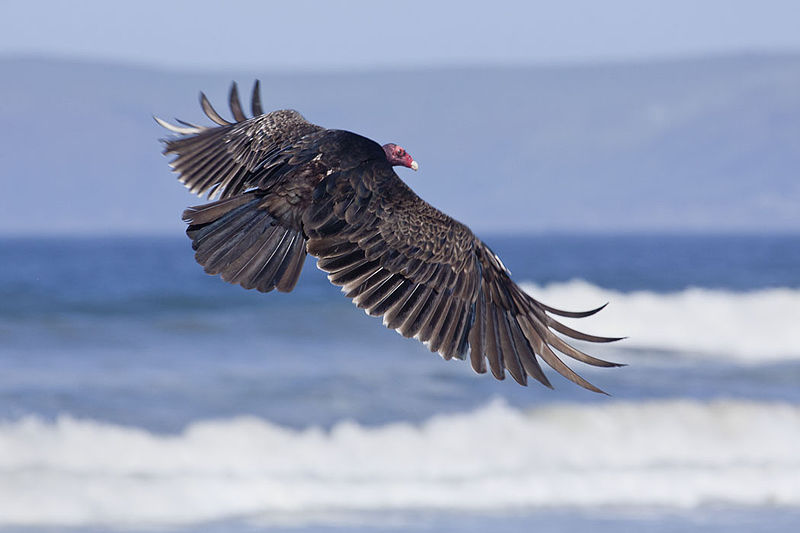
Turkey vultures are a type of bird found in the New World vulture family. They are known for their carrion-feeding habits and play an important role in cleaning up decaying animals in their ecosystems.
These medium-sized to large birds have a bald, red head and a dark plumage. They are found throughout the Americas and are particularly abundant in North America.
Turkey vultures have a unique ability to locate their food by their sharp sense of smell, and they can fly for long distances without flapping their wings.
These birds are important scavengers in their ecosystems, helping to prevent the spread of disease and reducing the impact of decaying animals on the environment.
Overall, turkey vultures are fascinating and important birds that play a critical role in their ecosystems.Scientific classification:
| Kingdom | Animalia |
| Phylum | Chordata |
| Class | Aves |
| Order | Accipitriformes |
| Family | Cathartidae |
| Genus | Cathartes Illiger, 1811 |
Also Featured In: Turkey Birds You Should Know,
30. Western Jackdaw

The Western Jackdaw is a member of the crow family and is found throughout Europe, western Asia, and North Africa. While most populations are resident, some migrate south in the winter.
There are four subspecies, each with distinct plumage coloration. Despite being a common bird, the Western Jackdaw is a fascinating species known for its high intelligence and adaptability.
These birds have been observed using tools, working collaboratively to solve problems, and even recognizing individual human faces.
With their distinctive and varied calls, they are often heard before they are seen, chattering away in the trees or on rooftops.
Due to their remarkable intelligence and adaptability, the Western Jackdaw is widely regarded as a beloved symbol of wildlife in many cultures.Scientific classification:
| Kingdom | Animalia |
| Phylum | Chordata |
| Class | Aves |
| Order | Passeriformes |
| Family | Corvidae |
| Genus | Coloeus |
| Species | C. monedula |
Also Featured In: Flocks Birds around Us, Ukrainian Birds You Should Know
31. Eurasian Magpie
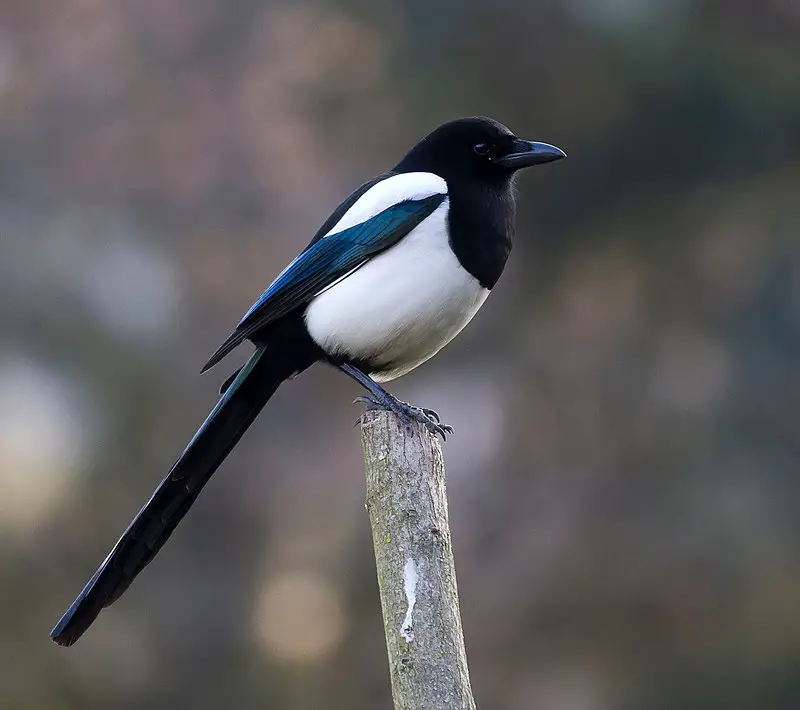
The Eurasian magpie, also known as the common magpie, is a bird found in the northern part of the Eurasian continent. It belongs to the corvids family and is part of the “monochrome” magpies.
The bird is a resident breeder that is always available in Europe. The only other magpie found in Europe is the Iberian magpie.
The magpie is often used as a synonym for the Eurasian magpie by English speakers.
The bird has a distinct black and white appearance and is known for its intelligent behavior. It can imitate sounds heard in its environment and also demonstrates self-awareness.
The Eurasian magpie is omnivorous and feeds on insects, small mammals, and fruits.
It forms monogamous pairs that last for a lifetime and builds nests in trees or bushes. The bird is not endangered and is often regarded as a nuisance due to its habit of raiding gardens for food.Scientific classification:
| Kingdom | Animalia |
| Phylum | Chordata |
| Class | Aves |
| Order | Passeriformes |
| Family | Corvidae |
| Genus | Pica |
| Species | P. pica |
Also Featured In: Common Estonian Birds, Common Birds in the Cities
32. African Fish Eagle
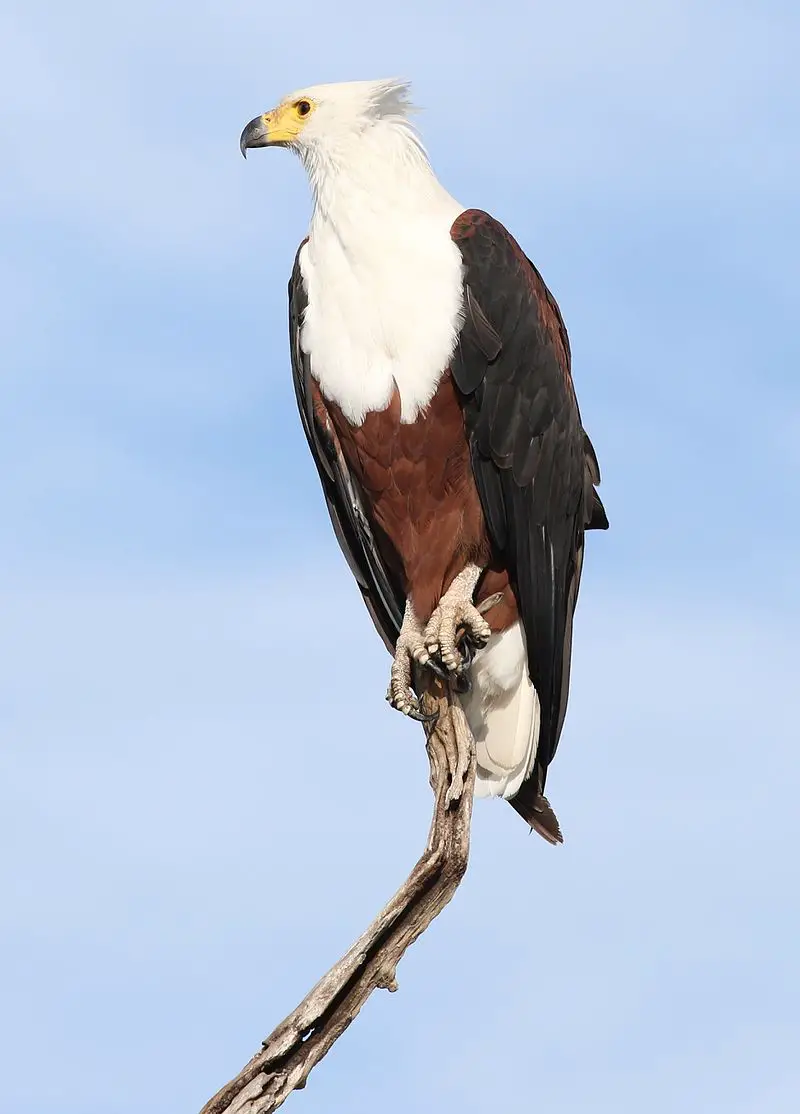
The African fish eagle is a majestic bird of prey found in sub-Saharan Africa near large bodies of water. It is known by many names in different languages due to its extensive range.
This eagle is the national bird of four African countries, including Malawi, Namibia, Zambia, and Zimbabwe.
Its scientific name, Haliaeetus vocifer, is fitting because it has a loud, distinctive call that can be heard from quite a distance.
The African fish eagle’s diet consists mainly of fish, which it swoops down to catch with its talons while in flight.
Its distinctive brown and white plumage, hooked beak, and sharp talons make this a formidable and impressive hunter.
The African fish eagle is an important symbol of African wildlife and is admired by bird watchers and nature enthusiasts for its beauty and strength.Scientific classification:
| Kingdom | Animalia |
| Phylum | Chordata |
| Class | Aves |
| Order | Accipitriformes |
| Family | Accipitridae |
| Genus | Haliaeetus |
| Species | H. vocifer |
Also Featured In: African Birds, Savanna Birds You Need to See
33. Griffon Vultures
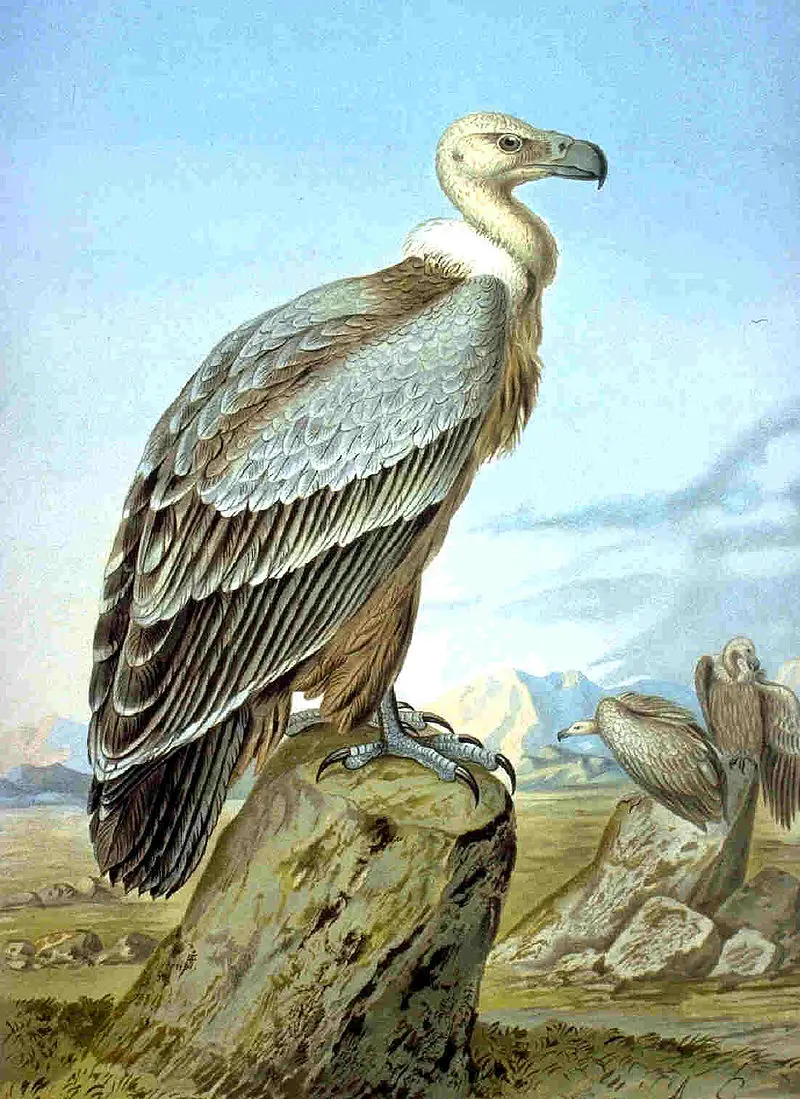
Griffon vultures, also known as Gyps vultures, belong to the Old World vultures family. These birds have long necks with downy feathers and a ruff around their necks formed by buoyant feathers.
Their beaks are big and slightly compressed with dark nostrils set transverse to the beak. These majestic birds have a slim head and are commonly found in mountainous areas. Unlike other birds, they feed on carrion, including dead animals and their bones.
Griffon vultures play a vital role in the ecosystem as they help in the natural process of reducing waste and preventing the spread of diseases.
However, their population has decreased significantly due to human activities such as poisoning, hunting, and loss of habitat.
Several conservation organizations are working towards protecting these magnificent birds and preserving their populations for future generations.Scientific classification:
| Kingdom | Animalia |
| Phylum | Chordata |
| Class | Aves |
| Order | Accipitriformes |
| Family | Accipitridae |
| Subfamily | Aegypiinae |
| Genus | Gyps Savigny, 1809 |
34. Leptoptilos
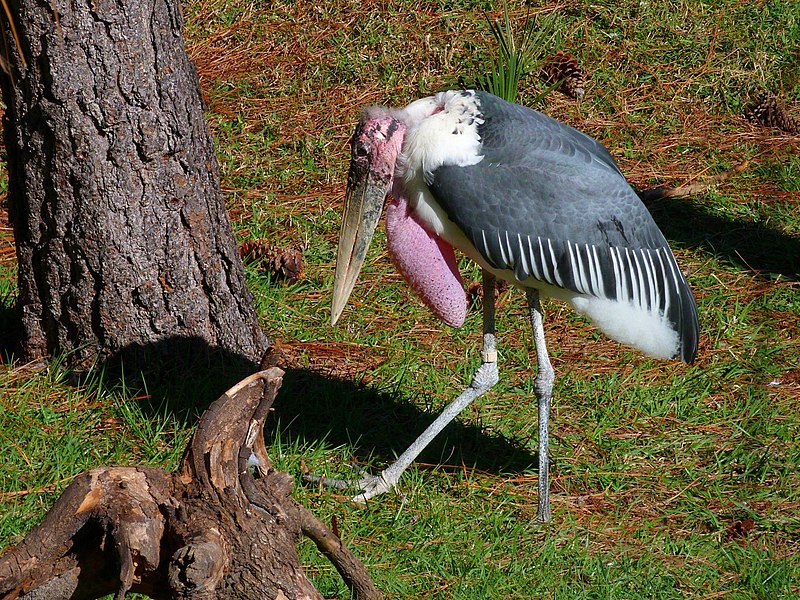
The Leptoptilos bird, commonly known as the adjutant bird, is a tropical stork found in southern Asia and Sub-Saharan Africa. With a wingspan of 210-250 cm and a height of 110-150 cm, it is one of the largest birds in the world.
Its name derives from the Greek words lepto and ptilos, meaning thin feather, and refers to the bird’s slender plumage.
The species has a black upper body and wings, while the belly and undertones are white. These birds are known for their distinctive appearance and impressive size.
Their habitat ranges from wetlands and marshes to agricultural regions near human settlements. Despite their large size, these birds are graceful in flight and can soar for hours at a time.
The Leptoptilos bird is an important part of the ecosystem and plays a crucial role in maintaining the balance of the environment.Scientific classification:
| Kingdom | Animalia |
| Phylum | Chordata |
| Class | Aves |
| Order | Ciconiiformes |
| Family | Ciconiidae |
| Genus | Leptoptilos Lesson, RP, 1831 |
35. Crested Caracaras
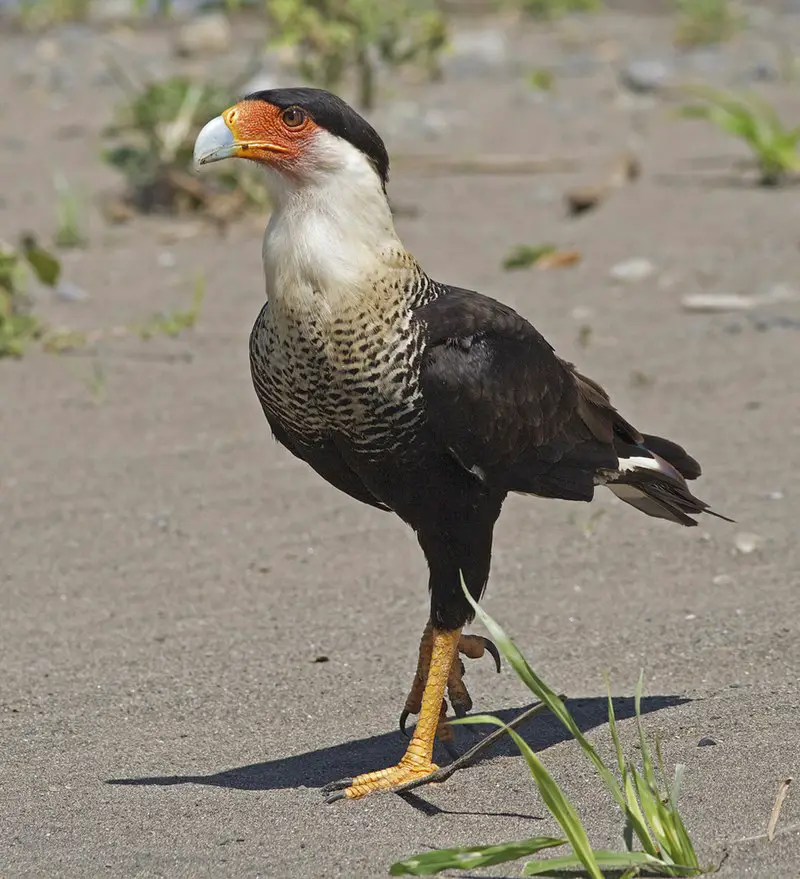
The crested caracara is a bird belonging to the Falconidae family. It is the only extant species in the genus Caracara. This bird is native to the Americas and it is found from the southern United States to northern Argentina.
The crested caracara has a distinctive crest on its head and a black patch around its eyes. It is a large bird, measuring up to 60 cm in length.
The diet of the crested caracara consists of small mammals, reptiles, and birds. The species is known for its scavenging behavior, often feeding on carrion.
The crested caracara is considered a species of Least Concern by the International Union for Conservation of Nature. However, habitat loss and fragmentation are some of the threats facing this bird in some regions.Scientific classification:
| Kingdom | Animalia |
| Phylum | Chordata |
| Class | Aves |
| Order | Falconiformes |
| Family | Falconidae |
| Subfamily | Polyborinae |
| Genus | Caracara Merrem, 1826 |
36. Cape Crow
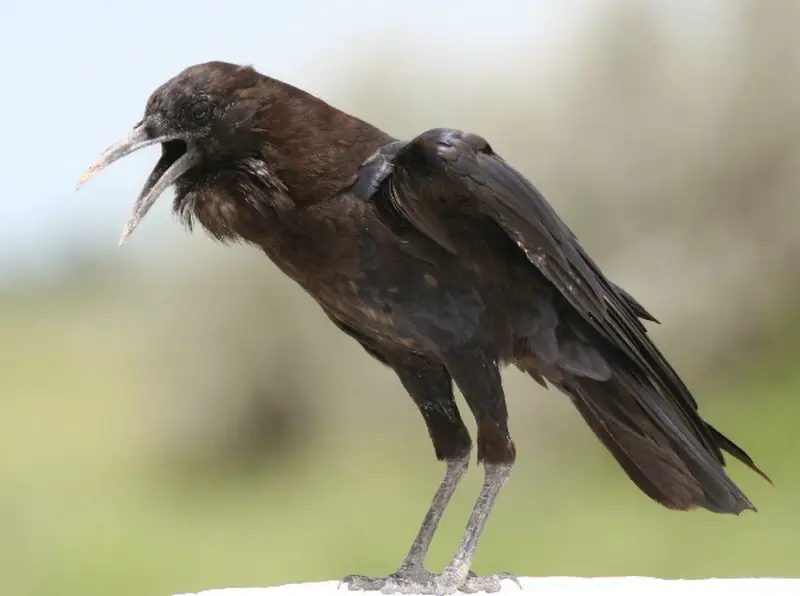
The Cape crow, also known as the black crow, is a bird species that measures around 48-50 cm in length. It is completely black with a subtle purple gloss in its feathers, giving it a regal appearance.
The Cape crow has longer legs, wings, and tail compared to other crow species, and its bill is considerably longer and slimmer, developed to probe the ground for invertebrates. The head feathers of the Cape crow have a coppery-purple gloss.
These birds are known for their intelligence and ability to adapt to new environments. They are commonly found in South Africa, particularly in urban areas where their adaptability has helped them thrive.
Overall, the Cape crow is a striking species with unique physical characteristics and remarkable adaptability.Scientific classification:
| Kingdom | Animalia |
| Phylum | Chordata |
| Class | Aves |
| Order | Passeriformes |
| Family | Corvidae |
| Genus | Corvus |
| Species | C. capensis |
Also Featured In: Spiritual Birds, Birds of Etosha National Park